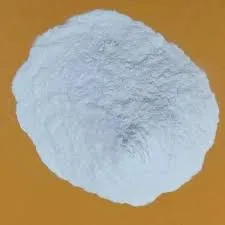
Dec . 09, 2024 23:02 Back to list
HPMC Varieties and Their Applications in Various Industries
HPMC Grades and Their Uses
Hydroxypropyl Methylcellulose (HPMC) is a versatile polymer derived from cellulose. It is widely used in various industries due to its unique properties, including excellent solubility in cold water, gel-forming abilities, and biocompatibility. HPMC has multiple grades, each tailored for specific applications, reflecting its versatility as a functional ingredient. This article will explore the different grades of HPMC and their respective uses across various industries.
Understanding HPMC Grades
HPMC is categorized into different grades based on its viscosity, solubility, and functional characteristics
. The primary grades of HPMC include1. HPMC K Grade This grade is known for its high viscosity and is commonly used in applications requiring thickening and stabilizing properties. HPMC K is often found in construction materials, where it enhances the workability of cementitious mixes.
2. HPMC M Grade With medium viscosity levels, HPMC M is suitable for a wider range of applications. It is frequently used in pharmaceuticals for drug delivery systems, particularly in the formulation of sustained-release tablets.
3. HPMC E Grade This lower viscosity grade is ideal for applications where high solubility is preferable. HPMC E is often utilized in food products as a thickener, emulsifier, and stabilizer, contributing to improved texture and shelf stability.
4. HPMC LV Grade This grade is designed for low viscosity applications. HPMC LV is commonly employed in liquid formulations, such as paints, coatings, and adhesives, where excellent flow properties are essential.
Each grade of HPMC possesses distinct chemical and physical properties, making it suitable for specific applications. The choice of grade depends on the desired product performance and the end-use requirements.
hpmc grades and uses

Applications of HPMC in Different Industries
Pharmaceutical Industry HPMC is an essential excipient in the pharmaceutical sector. Its gel-forming properties make it an ideal choice for controlled-release formulations. HPMC helps to sustain the release of active ingredients, enhancing the therapeutic efficacy of medications. It is also employed as a binder in tablet formulations and as a thickening agent in suspensions and emulsions.
Food Industry In the food industry, HPMC serves various functions, including acting as a thickener, stabilizer, and emulsifier. It improves the texture of food products, enhances water retention, and prolongs shelf life. HPMC is commonly found in salad dressings, sauces, and baked goods. Additionally, it is used in gluten-free products to mimic the texture typically provided by gluten.
Construction Industry HPMC is widely used in construction materials, particularly in tile adhesives, plaster, and mortar. Its high viscosity helps improve the workability and adhesion of these materials, preventing sagging and ensuring even application. HPMC also enhances water retention, allowing for better curing of cement-based products.
Cosmetic Industry In the cosmetic sector, HPMC is valued for its thickening and stabilizing properties. It is commonly found in lotions, creams, and gels. HPMC provides a smooth texture, enhances the spreadability of products, and helps maintain the stability of emulsions.
Personal Care Products Similar to its use in cosmetics, HPMC plays an important role in personal care products. It is utilized as a film-forming agent in hair sprays, as well as in various skincare formulations to improve texture and feel. Its biocompatibility makes it a suitable choice for products intended for sensitive skin.
Conclusion
Hydroxypropyl Methylcellulose (HPMC) stands out as a multifunctional polymer with a wide range of applications across diverse industries. Its various grades, tailored for specific uses, make it an invaluable ingredient in pharmaceuticals, food products, construction materials, and cosmetics. As industries continue to innovate, the demand for HPMC and its specialized grades is expected to grow, driven by the need for functional ingredients that enhance product performance and quality. Through its unique properties and versatility, HPMC continues to play a critical role in improving the effectiveness and usability of countless products in our daily lives.
-
Versatile Hpmc Uses in Different Industries
NewsJun.19,2025
-
Redispersible Powder's Role in Enhancing Durability of Construction Products
NewsJun.19,2025
-
Hydroxyethyl Cellulose Applications Driving Green Industrial Processes
NewsJun.19,2025
-
Exploring Different Redispersible Polymer Powder
NewsJun.19,2025
-
Choosing the Right Mortar Bonding Agent
NewsJun.19,2025
-
Applications and Significance of China Hpmc in Modern Industries
NewsJun.19,2025







